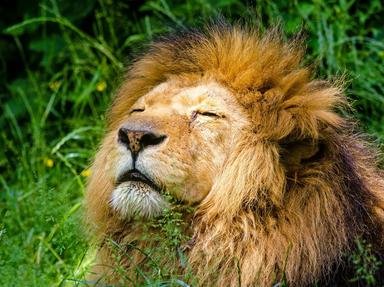
Which of These Animals Are Native to Africa? Quiz
Which 14 of these 24 choices are animals that are native to Africa. We're looking for animals that are indigenous, not ones that were brought in from other continents.
A collection quiz
by Billkozy.
Estimated time: 3 mins.
- Home
- »
- Quizzes
- »
- Animal Trivia
- »
- Animals by Region
- »
- Africa